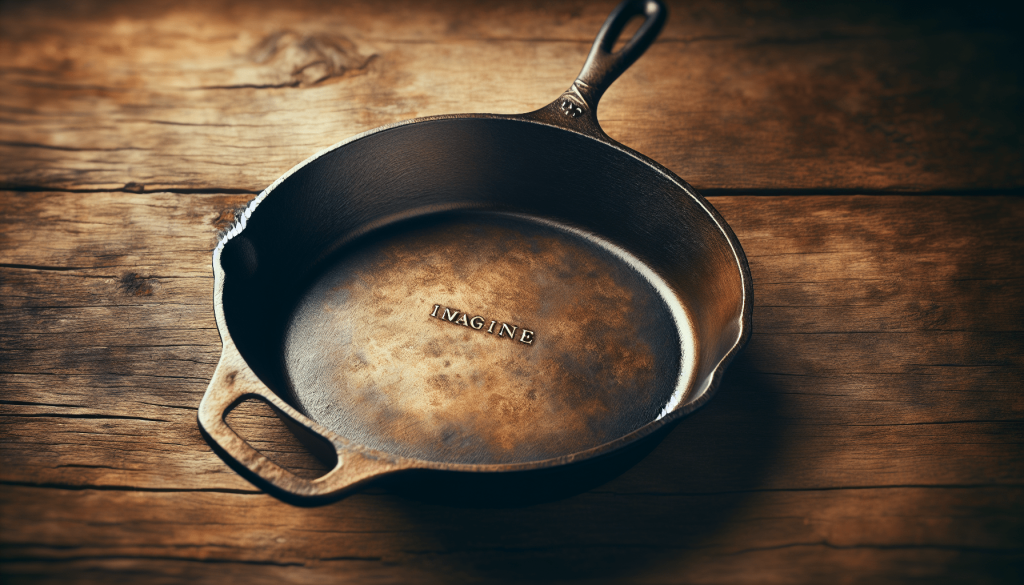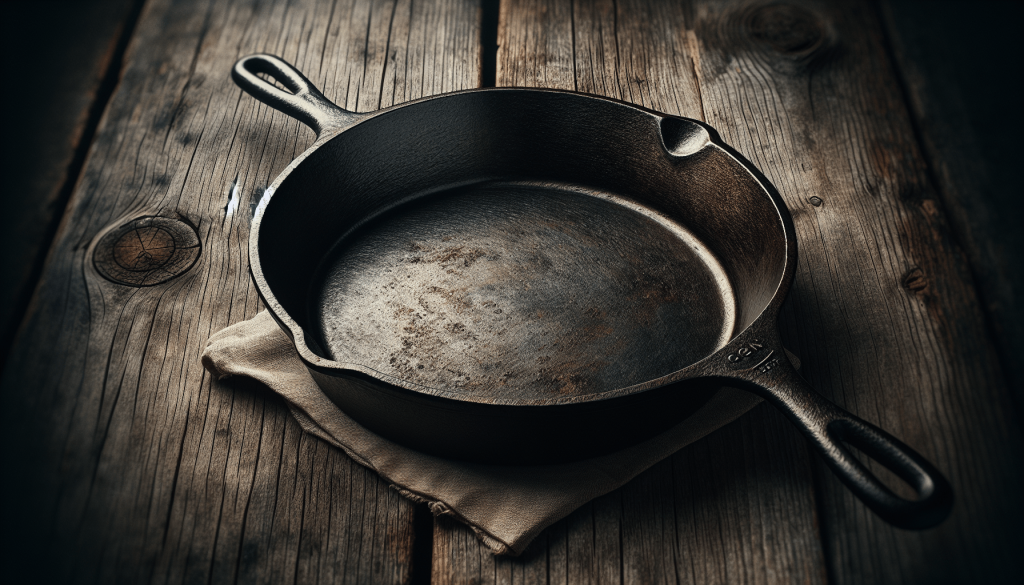Are you tired of constantly replacing your cookware? Look no further as this article will guide you on how to choose durable and long-lasting cookware that will serve you a lifetime. From understanding different types of materials to considering factors such as heat conductivity and maintenance, this comprehensive guide will ensure that you make an informed decision when investing in cookware that can withstand the test of time. Get ready to upgrade your kitchen essentials with confidence and enjoy cooking with reliable and durable cookware that will last a lifetime.

Material
Stainless Steel
Stainless steel is a popular choice for cookware due to its durability and resistance to rust and corrosion. It is made from a combination of metals, including iron and chromium, which gives it its bright and shiny appearance. Stainless steel cookware is known for its ability to distribute heat evenly, which helps in cooking food more efficiently. It is also easy to clean, as food is less likely to stick to its surface. However, stainless steel alone does not provide good heat retention, so it is often combined with other materials for optimal performance.
Cast Iron
Cast iron cookware is known for its excellent heat retention and distribution properties. It is made by pouring molten iron into a mold, which results in a durable and heavy piece of cookware. Cast iron cookware is extremely versatile and can be used on all types of stovetops, including induction hobs. It is also oven safe, allowing you to easily transition from stovetop to oven. However, cast iron requires regular seasoning to maintain its nonstick surface and prevent rusting. It is also quite heavy, which may not be suitable for everyone.
Copper
Copper cookware is prized by professional chefs for its superior heat conductivity. It heats up quickly and responds to temperature changes almost instantly, giving you precise control over your cooking. Copper also provides even heat distribution, resulting in uniform cooking. However, copper cookware requires regular polishing to maintain its shine and prevent tarnishing. It is also not compatible with induction hobs unless it has a magnetic base or is clad with another material.
Aluminium
Aluminium cookware is known for its lightweight and excellent heat conduction properties. It heats up quickly and evenly, allowing you to cook your food faster. Aluminium cookware is also corrosion-resistant, making it suitable for a wide range of cooking tasks. However, raw aluminium is reactive with acidic foods, which can cause a metallic taste. To overcome this, most aluminium cookware is coated or anodized to prevent such reactions. Anodized aluminium cookware is also more durable and resistant to scratching.
Construction
Multi-ply
Multi-ply construction refers to cookware that is made by bonding multiple layers of different materials together. This construction technique combines the advantages of each material, resulting in cookware with superior heat distribution and retention properties. For example, a multi-ply stainless steel cookware set may consist of a stainless steel exterior, an aluminium or copper core for enhanced heat conduction, and a stainless steel interior for easy cleaning.
Clad
Clad cookware refers to cookware that has a layer of one metal bonded to another metal. For example, clad stainless steel cookware may have a layer of copper or aluminium bonded to the bottom or throughout the entire cookware. This improves the heat distribution and retention properties of the cookware, as the inner metal provides excellent heat conductivity and the outer metal provides durability and compatibility with induction hobs.
Disk Bottom
Disk bottom cookware refers to cookware that has a disc of aluminium or copper bonded to the bottom of the cookware. This design improves the heat distribution of the cookware, as the inner metal provides excellent heat conductivity. However, the heat distribution may be less even compared to multi-ply or clad cookware, as the heat is primarily concentrated in the bottom of the cookware.
Durability
Thickness
The thickness of cookware plays a significant role in its durability. Thicker cookware tends to be more durable and less prone to warping or denting. However, thicker cookware also tends to be heavier, which may not be suitable for everyone. The ideal thickness of cookware will depend on personal preference and cooking style.
Weight
The weight of cookware can impact its durability and cooking performance. Heavier cookware tends to be more durable and provides better heat retention and distribution. However, heavy cookware can be difficult to handle, especially for individuals with limited strength or mobility. It is important to find a balance between weight and durability that suits your needs.
Handles
The handles of cookware should be sturdy and securely attached to the body of the cookware for durability. It is essential to choose cookware with comfortable and heat-resistant handles that provide a firm grip. Handles that are riveted or welded to the cookware are generally more durable than those attached with screws or bolts.
Heat Distribution
Even Heat Distribution
Even heat distribution is crucial for achieving consistent cooking results. Cookware with excellent heat distribution ensures that food is cooked evenly, preventing hot spots or uneven browning. Multi-ply or clad cookware, which have layers of different materials, generally provide better heat distribution compared to single-ply cookware.
Response to Temperature Changes
Cookware should respond quickly to changes in heat to give you precise control over your cooking. Copper cookware is known for its excellent response to temperature changes, allowing for precise adjustments when cooking delicate dishes. Stainless steel cookware with an aluminium or copper core also provides good temperature responsiveness.

Nonstick Coating
PTFE-based Coating
PTFE-based coatings, commonly known as Teflon, are the most popular nonstick coatings used in cookware. These coatings allow for easy food release and require less oil for cooking. However, PTFE coatings can degrade over time and release toxic fumes if overheated. It is important to follow the manufacturer’s instructions and avoid using metal utensils, as they can scratch the coating.
Ceramic Coating
Ceramic coatings are an alternative to PTFE-based coatings and are made from natural materials like sand and clay. They are known for their excellent nonstick properties and are generally considered safer than PTFE coatings. Ceramic coated cookware is also easier to clean and can withstand higher temperatures. However, ceramic coatings may not be as durable as PTFE coatings and may require more careful handling and maintenance.
Maintenance
Ease of Cleaning
Cookware that is easy to clean saves time and effort in the kitchen. Nonstick cookware, whether it is coated with PTFE or ceramic, generally requires less scrubbing and soaking to remove stuck-on food. Stainless steel cookware with a polished or brushed finish is also easy to clean, as food is less likely to stick. Dishwasher-safe cookware makes cleaning even more convenient, as it can be placed in the dishwasher for effortless cleaning.
Compatibility with Dishwashers
Not all cookware is dishwasher safe, and it is important to check the manufacturer’s instructions before placing cookware in the dishwasher. Some nonstick coatings may not withstand the high heat and abrasive detergents used in dishwashers, leading to deterioration of the coating. However, many stainless steel and cast iron cookware can be safely cleaned in the dishwasher, making cleanup a breeze.
Versatility
Compatibility with Induction Hobs
If you have an induction hob, it is important to choose cookware that is compatible with this type of stovetop. Induction hobs require cookware with a magnetic base, which includes many stainless steel and cast iron options. Copper and aluminium cookware are generally not compatible with induction hobs unless they have a magnetic base or are clad with another material.
Oven Safe
Cookware that is oven safe offers greater versatility in the kitchen. You can start cooking on the stovetop and then transfer the cookware directly to the oven without needing to use additional bakeware. Ensure that the cookware is oven safe at the desired temperature, as some cookware may have limitations on the maximum temperature it can withstand.
Lid
Tight-Fitting
A tight-fitting lid helps to retain heat and moisture, allowing for more efficient cooking. It prevents steam from escaping and helps to lock in flavors and nutrients. Cookware with a well-fitting lid is particularly important when simmering or braising, as it helps to maintain a consistent temperature and prevent the food from drying out.
Transparent
A transparent lid allows you to monitor your cooking without having to lift the lid and release steam. This can be particularly useful when cooking delicate dishes that require precise timing or when simmering foods that can easily overcook. Being able to see the progress of your cooking without lifting the lid helps to retain heat and moisture, resulting in better cooking results.
Price
Value for Money
When choosing cookware, it is important to consider the overall value for money. This includes the durability, performance, and versatility of the cookware in relation to its price. Opting for high-quality cookware may require a higher initial investment, but it can save you money in the long run by lasting for many years and providing reliable performance.
Budget Considerations
While high-quality cookware is desirable, it is also important to consider your budget when making a purchase. There are cookware options available at a wide range of price points, so it is possible to find suitable cookware that meets your needs and budget. It is essential to prioritize the features that are most important to you and allocate your budget accordingly.
Brand
Reputable Brands
Choosing cookware from reputable brands can provide assurance of quality and performance. Reputable brands often have a long history of producing high-quality cookware and have developed a reputation for excellence. They are also more likely to provide warranties or guarantees, giving you peace of mind in the event of any issues with the cookware.
Customer Reviews
Reading customer reviews can provide valuable insights into the performance and durability of cookware. Reviews from other customers who have used the cookware can give you a better understanding of its strengths and weaknesses. It is important to consider a range of reviews to get a balanced perspective before making a decision.
